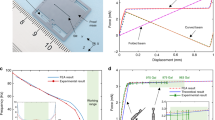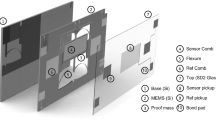Abstract
AN Askania gravimeter (GS.11) of the type using a static helical spring without astatization and damped aperiodically, having a period of 1.5 sec. and a sensitivity of about 10 cm./milligal., has been used at Hyderabad (lat. 17° 26′; long. 78° 27′) to record the variation of the value of gravity for a major part of a year with the view of studying Earth tides. The recording system is an optical one where a moving-coil galvanometer, the period of which is 17 sec., has been used, and the response of the gravimeter pendulum to the disturbances in the crustal regions of the Earth is magnified nearly 400,000 times, which is much more than that ordinarily achieved by seismometers. Our observation station has the advantage of being situated about 400 km, away from the coast on either side, which to a large extent eliminates the effect of Ocean Tides. In principle, a gravimeter is an extremely sensitive seismograph and hence, in addition to measuring the tidal force, it also acts as a monitor for earthquakes or similar seismic disturbances.
This is a preview of subscription content, access via your institution
Access options
Subscribe to this journal
Receive 51 print issues and online access
$199.00 per year
only $3.90 per issue
Buy this article
- Purchase on Springer Link
- Instant access to full article PDF
Prices may be subject to local taxes which are calculated during checkout
Similar content being viewed by others
Author information
Authors and Affiliations
Rights and permissions
About this article
Cite this article
BALAKRISHNA, S., JOHNSON, P. Nuclear Explosions and the Gravity-Time Curve. Nature 193, 964–965 (1962). https://doi.org/10.1038/193964a0
Issue Date:
DOI: https://doi.org/10.1038/193964a0
Comments
By submitting a comment you agree to abide by our Terms and Community Guidelines. If you find something abusive or that does not comply with our terms or guidelines please flag it as inappropriate.



